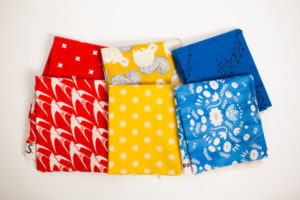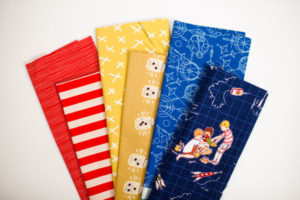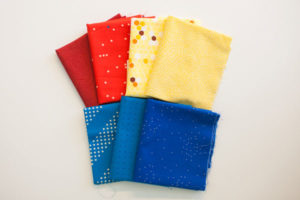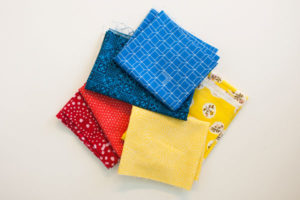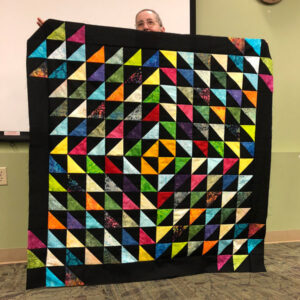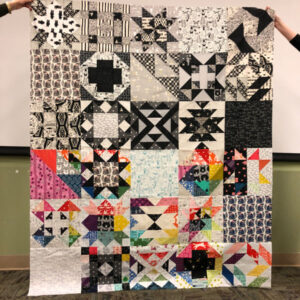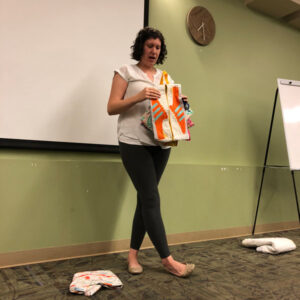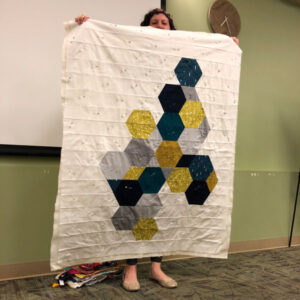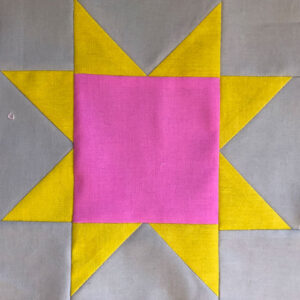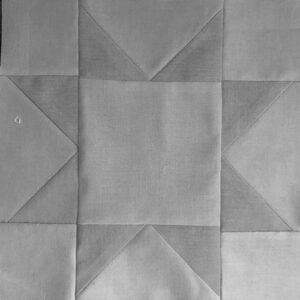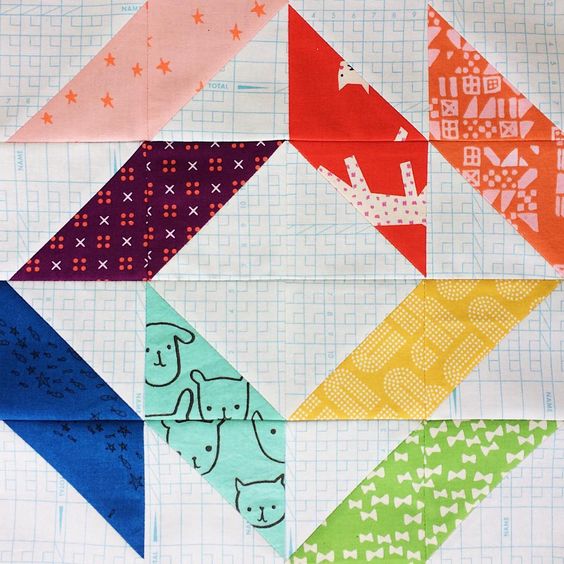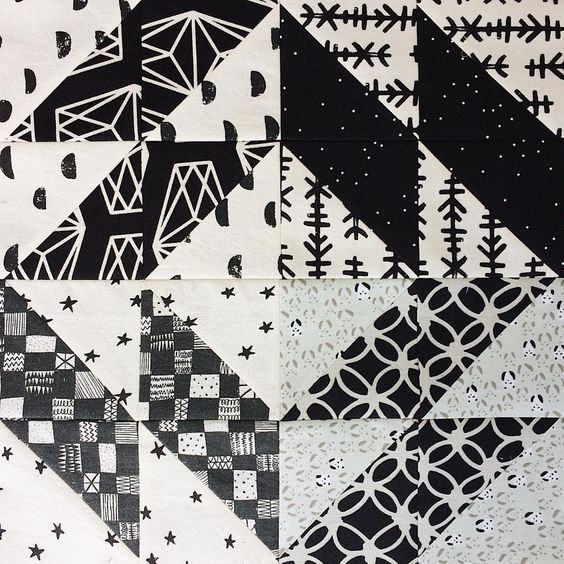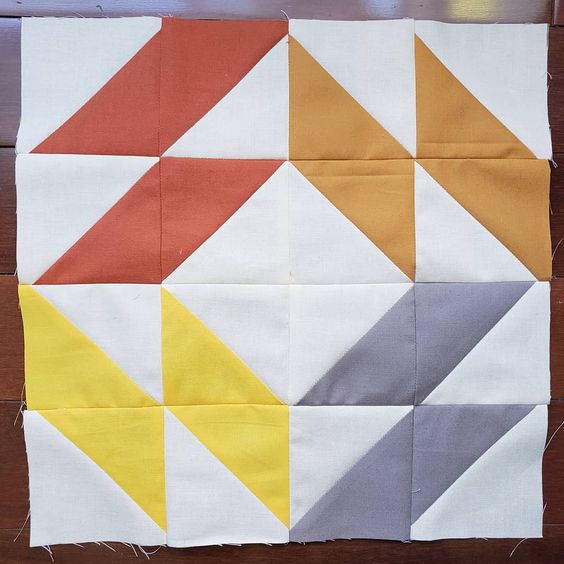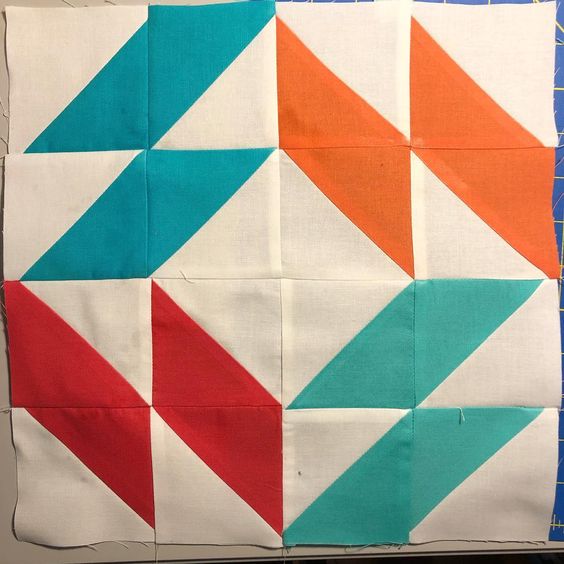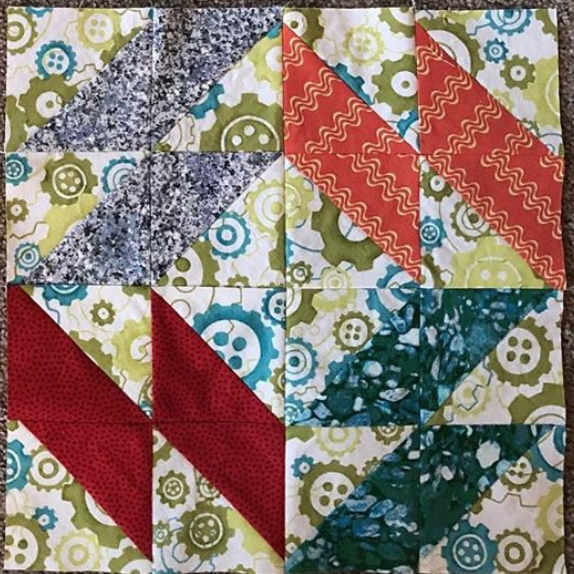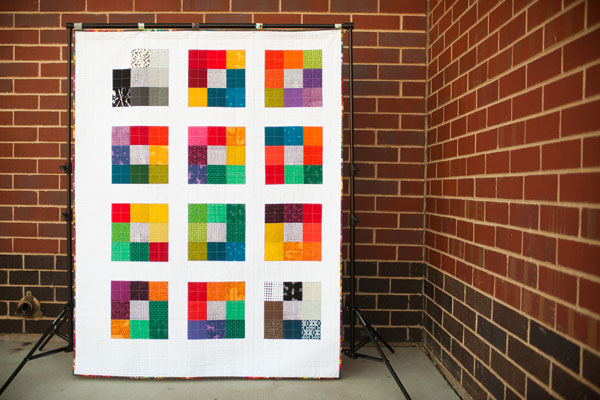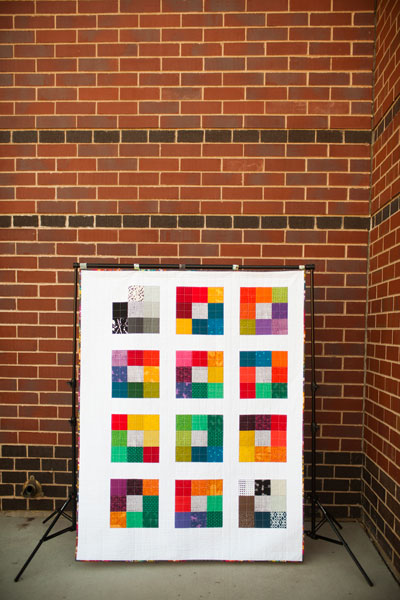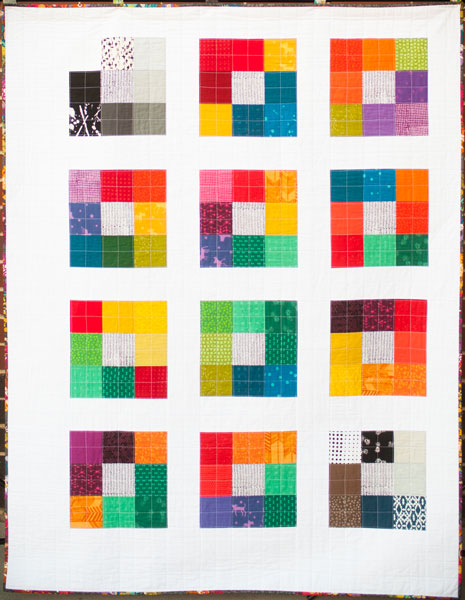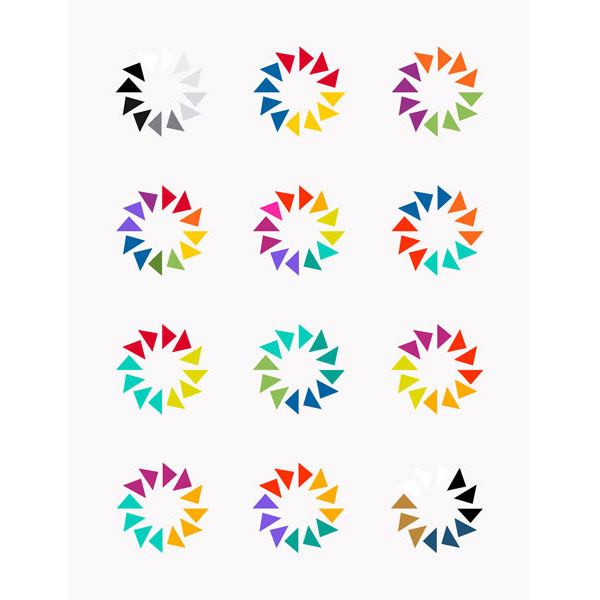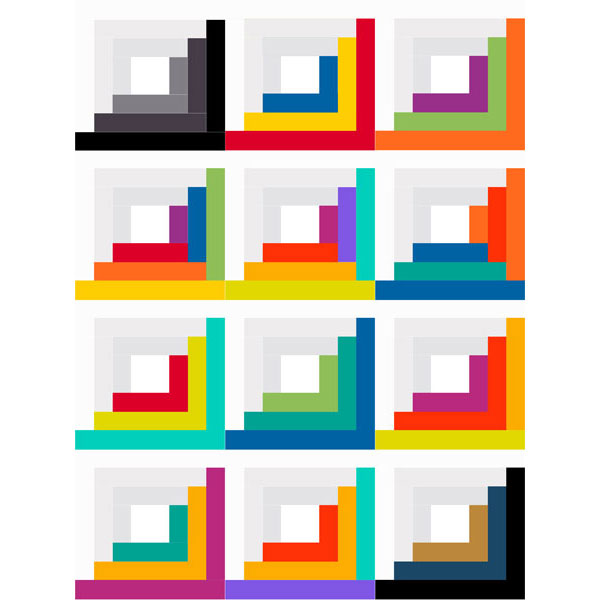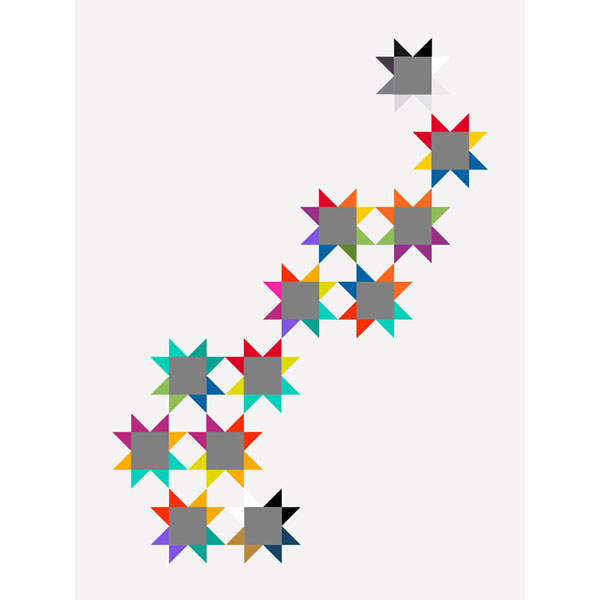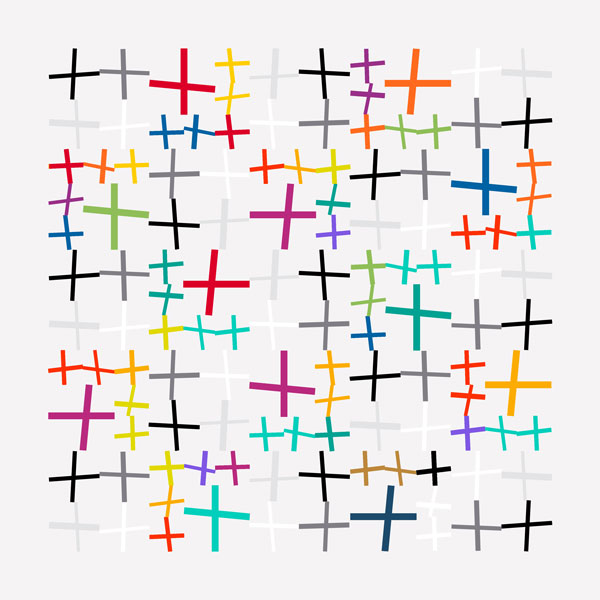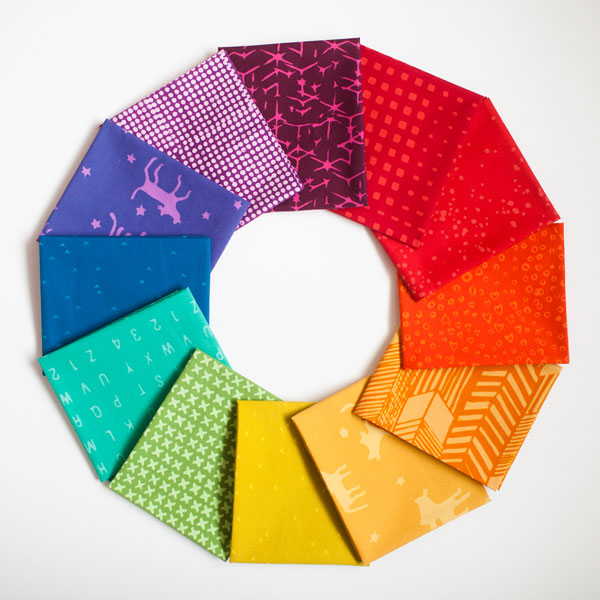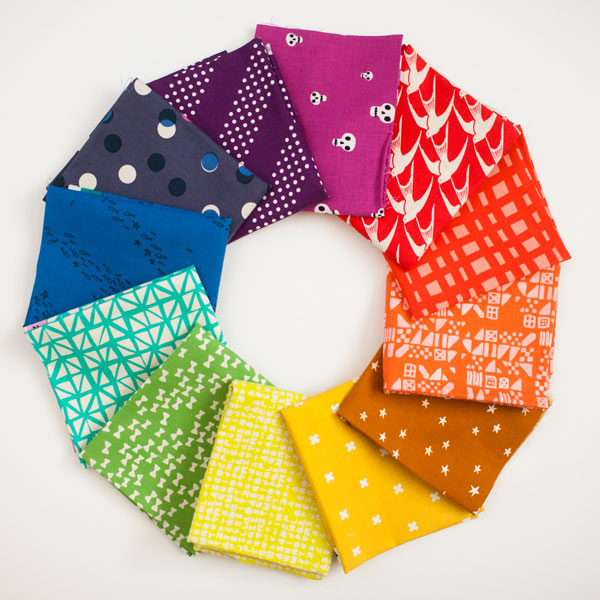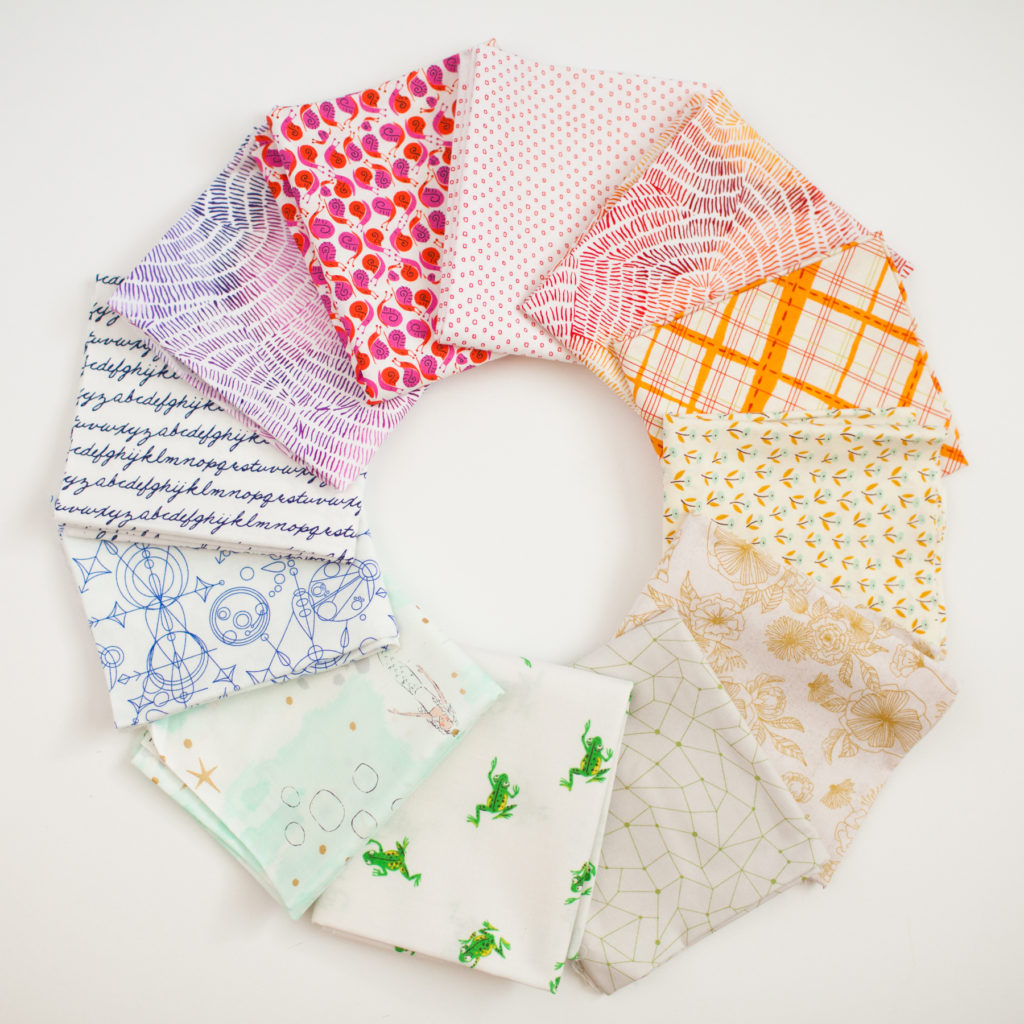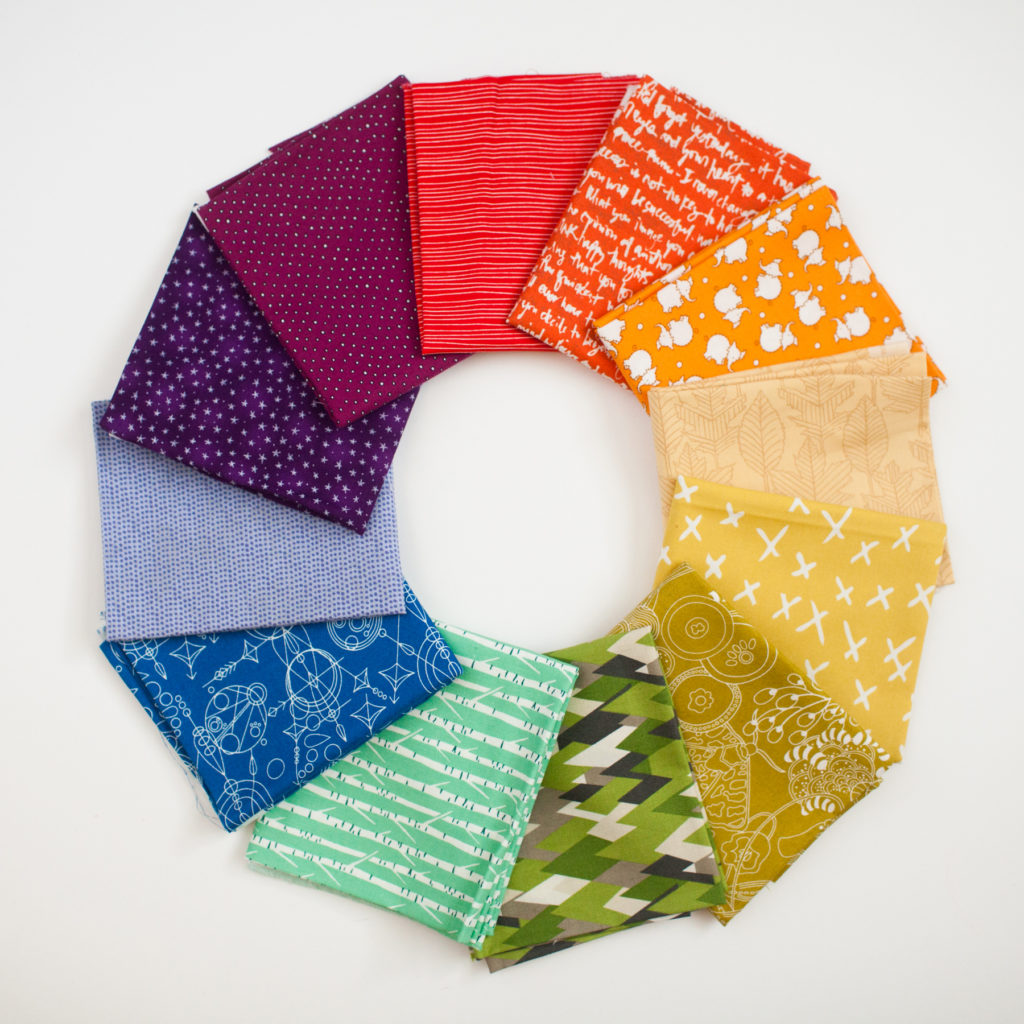Feb 1, 2019 | 2019 Block of the Month, Color Theory
The color wheel we will be focusing our studies on is made up of twelve colors, three primary, three secondary, and six tertiary colors. Over the next few months we will be looking at those twelve basic colors that make up the color wheel.
This month you will be applying primary colors to your selected block. Primary colors are the three colors that can not be made by mixing any other colors; Red, Yellow, and Blue. They are also the base of all other colors; all colors can be made by mixing primary colors.
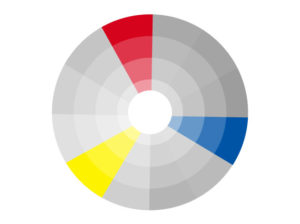
YOUR PRIMARY COLORS BLOCK
There are only three primary colors so you will need to use discretion when applying fabrics to your block. The block you selected should have more than three changeable components; you will use all of these as our color study lessons advance. However, this month you will need to apply the same fabric, or at least the same color, to more than one of those components.
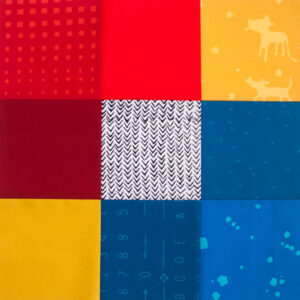
Our sample block contains a variety of prints and solids in different values of each color; Red, Yellow, and Blue.
You can choose to use just three fabrics to illustrate the primary colors, or you can select tints and shades or a variety of prints to convey the primary colors. You should be making a quilt block that you will love, so if you want to use only shades or only tints that is up to you. Remember, so much about color and color theory is how you personally view the colors and what you like. Below we are providing some sample pulls of different print fabrics that could be used to make your block dynamic. This illustrates that from almost any stash you can find a primary color scheme of fabrics!
Once you select your primary color fabrics apply them to your block. Make sure you are including all three primary colors; Red, Yellow, and Blue. Share your blocks with hashtag #bouldermqgcolorstudy19.
Jan 10, 2019 | Color Theory, Evening Meeting
ANNOUNCEMENTS
The next open sew is Saturday, January 19. If you plan on attending, please make sure to RSVP. Karla will be doing a Try Something New demo, so please make sure to bring fabric scraps.
If you are interested in signing up for the 2019 Round Robin, the sign up deadline is January 27. You can see the finished quilts from the 2018 Round Robin here. Members can read the rules and sign up here.
The UFO challenge sign ups have been extended and you can still submit your projects here. But don’t wait too long, the due date for the first project is due at the February 7 evening meeting. Once you submit your project list, you will get an email with the project number to work on.
MEETING RECAP
We had a huge turnout for our first meeting of 2019. 23 members and 6 guests joined us for a night of learning about Color Theory.
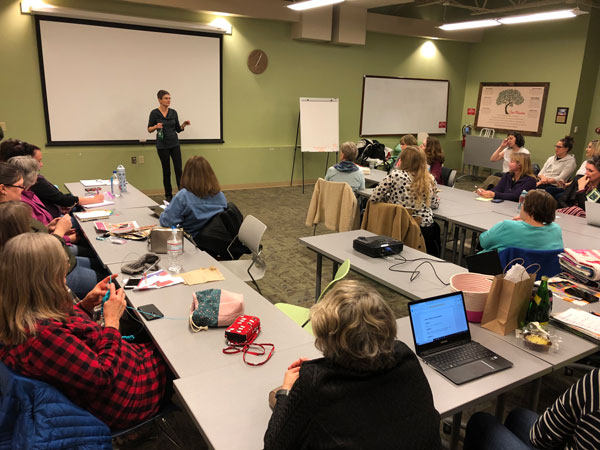
First, Claudia handed over the position of guild president to Monique. There were announcements and group introductions before we has show and tell.
Wendy showed her new HST quilt top finish, Laura finished her second Boulder MQG BOM quilt top, and Katie L. showed off her shoe bag pattern and an awesome oversized hexie quilt.
After show and tell, Rebecca and Laura lead us in the first of two presentations on Color Theory. We learned about value, tone, and basic colors. There may have been some head scratching, color theory can be complex, but the 2019 Color Study Block of the Month quilt was introduced. All year we will have an opportunity to dig deeper into color theory with monthly lessons and color prompts on the blog. Learn more here.
Members can download the presentation and also a color theory terms reference guide in the Member Area.
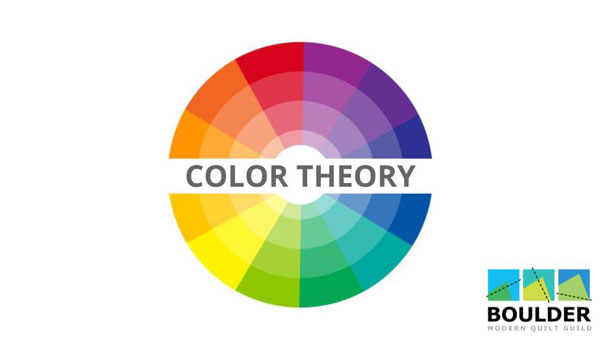
Join us in February as we dive into color harmonies and more details of color theory.
Jan 6, 2019 | 2019 Block of the Month, Color Theory
By now you should have selected the block you will be making each month for your 2019 BoulderMQG Color Study Block of the Month Quilt. Every month we will provide you a new prompt for selecting fabric and colors for your block. Please read our introduction post for more details about selecting your block.

Value is an important lesson to understand when it comes to color theory. Value is the amount of tint (lightness) or shade (darkness) a color has. When you use different valued fabrics in your quilt, you add dimension. Darker colors tend to recede, while lighter colors advance. Even when selecting different colors you should look for different values. When the colors are all the same value they will fight for dominance and make your quilt appear flat.
In this sawtooth star block you can see that the color photo on the left shows 3 colors. However, when viewing the black and white photograph on the right there is very little difference between the values of the 3 fabrics.
YOUR VALUE BLOCK
Your block can be created using neutrals or grayscale, monochromatic color selection, or multiple colors of fabric. The key to illustrating value within your quilt block is getting the fabrics in order of lightest to darkest. Value is determined only by comparing another value; whether something is lighter or darker is relative to the surrounding values.
When selecting your fabrics for this block, you will probably select some, if not all, fabrics outside of you preselected 12-color color wheel of hues. You are welcome to use only fabrics from those 12, but they will most likely not be in classic rainbow order.
DETERMINING VALUE OF YOUR SELECTED FABRICS
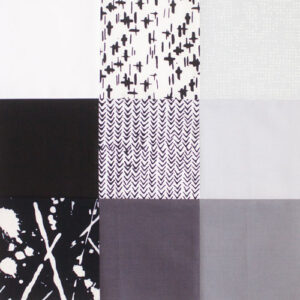
Our sample block was made with a grayscale of fabrics, starting with white as the lightest moving clockwise and ending with black as the darkest.
You will need to pick at least 3 fabrics to illustrate value. The simplest example being white, gray, and black. Once you select the fabrics for your January Value block, you need to determine the order of value. If you are using neutrals, particularly grays, you can arrange your fabrics from light to dark (or dark to light) fairly easily just by eye. It can be helpful to take a photograph of the fabrics or to check them in different lighting conditions in order to confirm your arrangement. If you choose to use fabrics with colors, whether prints or solids, there are some helpful tips when determining value order.
The most accurate method to check the value of your fabrics is to take a photograph and remove the color information by turning it black and white. You are then only looking at the tints and shades and no longer looking at the colors of the fabrics. There are many basic editing apps you can get on your phone that will allow you to change a color photo into black and white. Once you have removed the colors, you will be able to clearly identify the order of values.
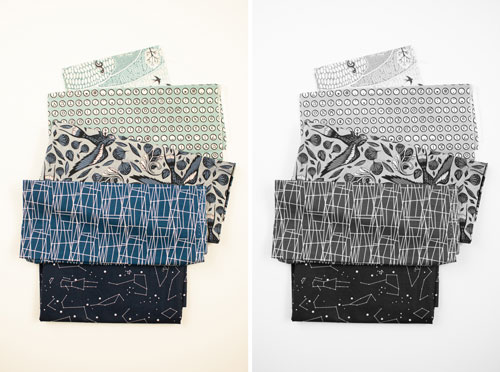
Not only does the main background color of a print fabric determine its value, but also the color(s) used in the pattern and the density of the print. For example, the second fabric from the top has fairly dense white circles which makes it appear as a lighter value than the third fabric featuring darker birds. Even though the main background colors of these fabrics have the same value, you can use the prints to help determine an overall value order of the group.
You can easily make your picture black and white in your phone photo app. Here we show how to make your photo black and white just using your iPhone.

Step 1: Select Edit in your Photos app.
Step 2: Select the dial from the lower menu.
Step 3: Select Color from the dial menu.
Step 4: Slide the saturation all the way to the left to remove all color. Select done to save your black and white photo.
For a quick check without needing to use a camera and then editing your photo, you can use a red value finder to view your fabrics. There are some commercially made red value finders available on the market, or you could make your own with transparency paper or acrylic. Red is used for value finding because the red hue cancels out color information and reveals the tint or shade. You can then arrange your fabrics in the correct value order.
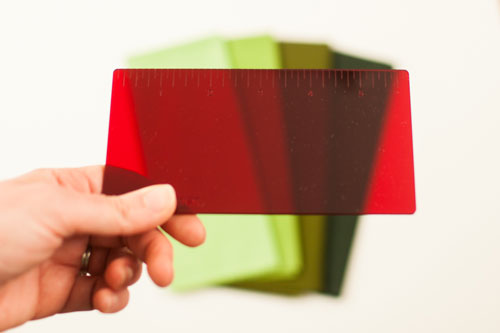
Although it is fairly easy to see the value differences in this group of solid green fabrics, this technique can be applied to other fabric pulls.
The red value finder is a “quick check” tool that you can just hold up on the spot. However, there are some errors in using a red value finder; particularly with warm colors. When viewing warm colors you could opt to use a green value finder for more accurate results.
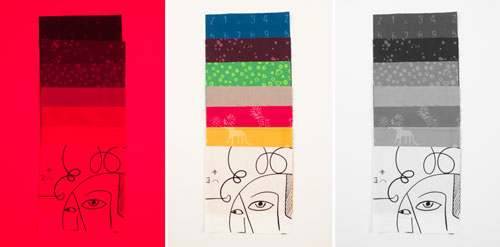
In this example you can see that the red value finder on the left does not correctly order the warm colors (red-violet, magenta, yellow) when compared to checking the value with the black and white photo on the right.
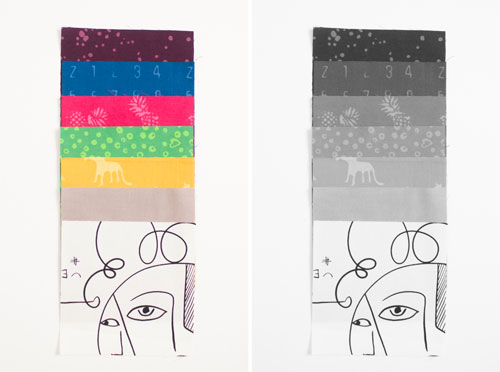
Instead, the correct value is illustrated by only using the black and white photo technique.
After determining your value order, apply this to the block you have selected for your Color Study Quilt. Remember, the lesson for January is value, so your block should showcase an order of 3+ fabrics from light to dark, or dark to light. Share your makes using the hashtag #bouldermqgcolorstudy19.
Dec 31, 2018 | 2018 Block of the Month, Color Theory, Evening Meeting
The January evening meeting is:
Thursday, January 3 from 6 pm – 8:30 pm
Alfalfa’s Market
785 E South Boulder Rd
Louisville, CO 80027
Laura L. and Rebecca will be presenting on Color Theory. We will be discussing the fundamentals of color theory, color harmonies, and color context, and talking more about the 2019 Boulder MQG Color Study BOM.
If you have a color wheel, please bring it. It will be useful for following along and some exercises we have planned.
OTHER ANNOUNCEMENTS
We’d like to thank everyone who participated in the 2018 BoulderMQG BOM! We’ve seen so many amazing variations of the blocks and are excited to see some finished quilts! If you missed it, Laura L. put together a great post with final layout options.
As you finish up your blocks, make sure you’re still using the hashtag #bouldermqgbom18 and tagging us @bouldermqg when posting your blocks on Instagram!
There’s still time to sign up for the 2019 UFO challenge, we’ve extended the registration deadline.
Signups for the 2019 Round Robin are open now through January 27. You can find the rules and sign up in the Member Area.
We hope all of you have a great New Year and we’ll see you at the meeting Thursday!
Dec 30, 2018 | 2018 Block of the Month, 2019 Block of the Month, Color Theory
We had so much fun with our 2018 BoulderMQG Block of the Month challenge last year that we decided to run another monthly make challenge this year! There will be some differences between last year and this year. Last year, every month we put out a new block tutorial with instructions for cutting and sewing a 12” block. You can still find all the 2018 monthly tutorials on the blog, here. This year, we will be putting out prompts for fabric selection based on our 2019 theme, color theory.
Some of the questions we hear repeatedly are; how do you select the best colors for a quilt, and how do you pick the right fabrics for a quilt? Each month on the blog you will get a brief lesson relating to the color study of the month. You will then select the fabrics that relate to the prompt to use in your monthly block. Instead of providing a block construction tutorial each month, we want you to select the same block to make every month that can support the change in fabrics based on the prompt.
THE BLOCKS
You will want to pick a block that has between 6-10 changeable components, and an element (center or background fabric) that remains the same for every month. This will tie the quilt together at the end of the year. Some great blocks that would work are, sawtooth star, wonky star, 9-patch, string blocks, log cabin or courthouse steps variation, pineapple, flying geese circle, or a variety of other paper pieced blocks. You could even piece an improv block (or section of your quilt if you’re not a block quilter) each month following the prompt. We really want you to make this quilt your own by selecting a block as simple or as complex as you think you will have time to make each month. We do recommend that you make 12”-15” finished blocks to end up with a lap size quilt. Adjust your block size accordingly if you wish to have a smaller or larger quilt when the project is complete.
Here are some great block options:
Sawtooth Star Tutorial from Diary of a Quilter – Various sizes from 4″ – 20″
Log Cabin Tutorial from The Seasoned Homemaker – 12.5″ block
Churn Dash Tutorial from The Seasoned Homemaker – 12.5″ block
Circle of Geese Pattern by Piece by Number – 12″ block
Wonky Cross Tutorial from The Crafty Mummy – 10″ block
THE QUILT
To give you an idea of what your 2019 BoulderMQG Block of the Month Color Study quilt might look like, we’ve provided some digital versions with some of the suggested blocks. (Our sewn sample quilt was made from 9-patch blocks mostly from Hoffman Indah Batiks and Michael Miller Couture Cotton, with Kona white sashing.)
THE FABRIC
As far as fabric goes, we suggest that you have at least a fat eighth each of no less than 12 different colors in true hue; red, red-orange, orange, yellow-orange, yellow, yellow-green, green, blue-green, blue, blue-violet, violet, and red-violet. And you need at least 3-8 fabrics to represent value, and 3-6 to represent neutrals. Plus any background fabric that will remain the same in each block or be used during final assembly of your quilt.
You don’t have to use solid fabrics, but we do advise that you pick a true hue of each color. A hue is a color in it’s true saturated form. You may also want to add tints and shades (lighter or darker, but not gray tones/less saturated colors) of several of the colors. If you are working with prints, not solids, you could pull a couple prints of each color. Of course, exact amounts of fabric are dependent on the block you select and the size of quilt you want to end up with. Here are some fabric pull samples to give you an idea of what to look for in your stash.
Pictured: Indah Batiks, Cotton & Steel, low volume, and basic blenders.
We are excited about providing the opportunity for BoulderMQG members and friends to sharpen their fabric selection skills and brush up on color theory! Join along and post your blocks each month using the hashtag #bouldermqgcolorstudy19



